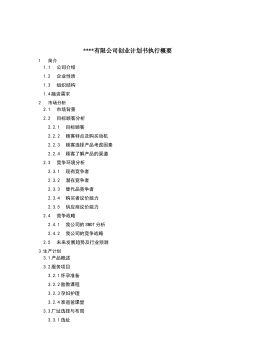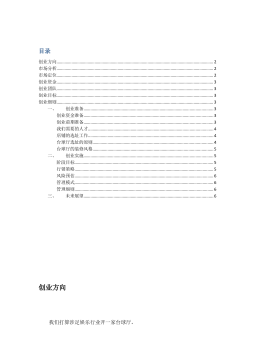公园湖泊水质监测及复合式BAF工艺处理富营养化湖水的试验研究
VIP免费
摘要
公园湖泊不仅是人们休闲娱乐的重要场所,也是城市景观多样性及水生态
系统的重要组成部分。近年来,随着社会经济发展步伐的不断加快,城市公园数
量逐步增多,湖泊水体污染及富营养化趋势日益突出,已严重影响到人们的生
活质量,及时了解水体污染及富营养化现状和研究开发高效实用、经济合理的水
处理工艺对提高人们生活质量以及公园湖泊的污染防治具有重要意义。
本文选取了上海市 12 个公园中 13 个典型湖泊水域作为研究对象,通过对
各湖泊的监测结果,分析了湖泊水质指标的时空变化规律及水体污染特征,并
采用改进的综合水质标识指数法对各湖泊进行了水质污染状况评价以及采用富
营养化综合标识指数法评价了各湖泊的富营养状况 ,基于水质特征及富营养化
评价分析,采用 A/O 复合式曝气生物滤池工艺对富营养化公园湖水进行了试验
研究,主要结论如下:
公园湖泊各项污染指标中浊度、总磷、总氮、氨氮、叶绿素 a浓度的变化规律
较一致,曲阳公园湖泊各项污染指标浓度均大于其他公园湖泊且不同月份变化
幅度显著。氮、磷可能均是天山公园、长风公园和淞南公园大湖发生富营养化的
主要影响因子,天山公园和长风公园湖泊中叶绿素 a与氨氮显著正相关。
改进的综合水质标识指数法运用于公园湖泊水质污染的评价结果表明,金
桥公园湖泊水质最好,为Ⅲ~Ⅳ 类,其余公园湖泊水质多处于Ⅴ类或劣Ⅴ类水平,
其中曲阳公园湖泊污染最为严重,监测期间水质均为劣Ⅴ类并有黑臭现象发生。
夏秋两季公园湖泊污染普遍较春冬两季严重。公园湖泊主要污染因子为 COD 和
TN。富营养化评价结果表明,仅金桥公园和人民公园湖泊水体在监测期间均为中
营养型类别,其余公园湖泊不同月份均存在不同程度的富营养化现象 ,夏季是
公园湖泊出现富营养化现象最多的季节。
曝气生物滤池的实验研究结果表明:当曝气生物滤池 A/O 体积比为 1:1.08、
水力负荷为 1.1 m3/m2h、气水比为 2.5:1 时,曝气生物滤池对 COD 、NH4+-
N、TN 、TP 、浊度的平均去除率分别达到
62.6%、96.02%、46.1%、45.7%、91.84%,出水 COD、NH4+-N 浓度可到达到Ⅳ类
水标准。反应器出水回流比的增加对 COD、氨氮、浊度的去除率影响不大,总磷
的去除率有所降低,但总氮去除率显著升高,在回流比为 1:1、进水总氮浓度在
4.56 mg/L~6.31mg/L 之间时, 出水总氮浓度基本维持在2mg/L 以下,达到Ⅴ类
水标准,满足一般景观水体要求且平均去除率达 64.66%。
关键词:公园湖泊 水质评价 富营养化 A/O 复合式 BAF
ABSTRACT
Park lakes are not only an important place for people to have entertainment
activities but also an important constituent of the city landscape diversity and water
ecological system. In recent years, with the social-economic development, the number
of city parks gradually increasing, pollution and eutrophication trend of the lake water
has become increasingly prominent and seriously affected people's life quality. To keep
know about the water pollution and eutrophication status and develop the high efficient,
I
practical, economical, reasonable water treatment process is of great significance to
improve the people's quality life as well as the pollution prevention of the park lake.
13 typical lakes water of the 12 parks in Shanghai were selected as the objects of
study, analysed the space time variety rule of the different quality indicators of the lake
water and water pollution characteristics by the monitoring results for each lake. The
improved comprehensive water quality identification index method has been used to
evaluated the water pollution situation for each lake and the comprehensive
eutropHication identification index method has been used to assess the eutropHication
status for the various lakes. A/O compound BAF process has been used on the
experimental study for the eutropHication water of the lake park based on the analysis
of the water quality characteristics and eutropHication evaluation, the main conclusions
are as follows:
The change rule of the various pollution indicators about turbidity, total
pHospHorus, total nitrogen, ammonia nitrogen, chlorophyll a concentration is a more
consistent, the concentration of the pollution indicators of the Quyang park lake was
greater than other park lakes and the rangeability of the concentration varied
significantly in different months. Nitrogen, pHospHorus probably were the main
influence factors made the Tianshan Park, Changfeng Park and Songnan greater Park
lake eutropHia. Significantly positive correlation was found between chlorophyll a
concentration and ammonia nitrogen in Tianshan Park and Changfeng Park lakes.
The improved comprehensive water quality identification index method was used
in the evaluation of the park lake water pollution, the results showed that jinqiao park
lake water quality was the best, the water quality were in class Ⅲ and class Ⅳ
level.most of the other park lakes’ water quality were in class Ⅴ or inferior class Ⅴ
level. Quyang park lake was the most highly contaminated, the water quality was in
inferior class Ⅴ level and sometimes black-odor pHenomenon occurred during the
monitoring period. The pollution of the park lakes in summer and autumn was generally
more serious than spring and winter, the water quality management should be
strengthen. The main pollution factors of the park lakes were COD and TN. The
eutropHication assessment results showed that only Jinqiao Park and People's Park lake
water were in mesotropHic category during the monitoring period, there were different
degrees eutropHication in different months in the other park lakes, most of the
eutropHication pHenomenon of the park lakes appeared in summer.
BAF experimental results showed that: when the A/O volume ratio of the BAF was
in 1:1.08, hydraulic loading was in 1.1 m3/m2h, and the gas-water ratio was in 2.5:1,
BAF for the average removal rate of COD、NH4+-N、TN、TP、turbidity reached 62.6%,
96.02%, 46.1%, 45.7%, 91.84%, respectively. The concentration of effluent
COD、NH4+-N could reach class Ⅳ water standard. Increasing the effluent reflux ratio
of the BAF has little impact for the removal rate of COD, ammonia, turbidity, the
removal rate of TP decreased, but the removal rate of TN increased significantly, when
the reflux ratio was 1:1, the total nitrogen concentration of influent water between
4.56mg/L~6.31 mg/L, the total nitrogen concentration of effluent water was maintained
II
at less than 2mg/L, reaching class Ⅴ water standard, meeting the general landscape
water requirements and the average removal rate reached 64.66%.
Key word: Park lake,Water quality
assessment,EutropHication,A/O compound BAF
目录
中文摘要
ABSTRACT
第一章 绪论......................................................................................................................1
1.1 公园湖泊功能与特点..............................................................................................1
1.1.1
公园湖泊的功能
...............................................................................................1
1.1.2
公园湖泊的特点
...............................................................................................1
1.2 湖泊水体富营养化..................................................................................................2
1.2.1
水体富营养化的概念
.......................................................................................2
1.2.2
湖泊水体富营养化的影响因素
.......................................................................3
1.2.3
水体富营养化的危害
.......................................................................................3
1.2.4
湖泊富营养化现状
...........................................................................................4
1.3 综合水质评价方法和富营养化评价方法研究进展..............................................6
1.3.1
综合水质评价方法研究进展
...........................................................................6
1.3.2
富营养化评价方法研究进展
...........................................................................7
1.3.3
国内外湖泊水体水质控制技术研究现状与发展趋势
...................................8
1.3.4
富营养化水体水质控制技术发展趋势
.........................................................10
1.4 曝气生物滤池技术概述........................................................................................11
1.4.1
曝气生物滤池的概况
.....................................................................................11
1.4.2
曝气生物滤池的工作原理和工艺特点
.........................................................11
1.4.3
曝气生物滤池工艺形式
.................................................................................11
1.4.4
曝气生物滤池研究现状
.................................................................................12
1.4.5
曝气生物滤池应用于富营养化水体存在的问题及发展趋势
.....................14
1.5 课题研究背景、研究目的及研究内容................................................................15
III
1.5.1
研究背景
.........................................................................................................15
1.5.2
研究目的
.........................................................................................................15
1.5.3
研究内容及意义
.............................................................................................16
第二章 公园湖水污染监测分析....................................................................................18
2.1 调查对象和调查时间............................................................................................18
2.2 水样采集和监测分析方法....................................................................................20
2.3 公园湖泊水质指标时空变化规律及水体污染特征分析....................................22
2.3.1
各公园湖水
pH
的时空变化规律及特征分析
...............................................22
2.3.2
各公园湖水
DO
的时空变化规律及水体污染特征分析
..............................23
2.3.3
各公园湖水透明度的时空变化规律及水体污染特征分析
.........................24
2.3.4
各公园湖水浊度的时空变化规律及水体污染特征分析
.............................25
2.3.5
各公园湖水电导率的时空变化规律及水体污染特征分析
.........................26
2.3.6
各公园湖水高锰酸盐指数的时空变化规律及水体污染特征分析
.............26
2.3.7
各公园湖水化学需氧量的时空变化规律及水体污染特征分析
.................27
2.3.8
各公园湖水总氮的时空变化规律及水体污染特征分析
.............................28
2.3.9
各公园湖水氨氮的时空变化规律及水体污染特征分析
.............................29
2.3.10
各公园湖水总磷的时空变化规律及水体污染特征分析
...........................30
2.3.11
各公园湖水叶绿素
a
的时空变化规律及水体污染特征分析
....................31
2.3.12
各公园湖水氮磷比的时空变化规律分析
...................................................32
2.4 公园湖泊水体各指标之间的相关关系分析........................................................33
2.5 本章小结................................................................................................................37
第三章 公园湖泊水质污染及富营养化综合评价........................................................38
3.1 公园湖泊水质污染状况综合评价与分析............................................................38
3.1.1
水质污染状况评价方法
.................................................................................38
3.1.2
公园湖泊改进综合水质标识指数法评价结果
............................................40
3.1.3
公园湖泊综合水质评价指数随时间变化规律分析
...................................44
3.1.4
公园湖泊水体水质污染特征及等级状况
.....................................................45
3.1.5
综合水质污染评价方法的对比分析
.............................................................46
3.2 公园湖泊水体富营养化评价与分析....................................................................47
3.2.1
富营养化综合标识指数
.................................................................................47
3.2.2
公园湖泊富营养化综合标识指数法评价结果
.............................................48
3.2.3
公园湖泊营养类别随时间变化规律
.............................................................50
3.3 公园湖泊水质污染及富营养化原因分析..........................................................51
3.4 公园湖泊水质污染及富营养化防控措施..........................................................52
3.5 本章小结...............................................................................................................53
第四章 A/O 复合式 BAF 工艺净化富营养化公园湖水的试验研究...........................54
4.1 实验装置系统及工艺流程....................................................................................55
4.1.1
实验装置系统
.................................................................................................55
4.1.2
工艺流程
.........................................................................................................55
4.2 实验材料与实验方法............................................................................................55
4.2.1
实验用水
.........................................................................................................55
4.2.2
填料选择
.........................................................................................................56
IV
4.2.3
分析方法
.........................................................................................................58
4.3 实验内容................................................................................................................58
4.4 曝气生物滤池的挂膜与启动................................................................................58
4.5 曝气生物滤池处理公园湖水性能研究................................................................60
4.5.1
不同曝气位置对污染物去除效果的影响
.....................................................60
4.5.2
水力负荷对曝气生物滤池处理性能的影响
.................................................63
4.5.3
气水比对曝气生物滤池工作特性的影响
.....................................................65
4.5.4
不同程度富营养化水体对曝气生物滤池处理效能的影响
.........................67
4.6 正交试验确定曝气生物滤池最优工况及效能....................................................70
4.6.1
正交试验确定曝气生物滤池最优工况
.........................................................70
4.6.2
曝气生物滤池最优工况下运行效能
.............................................................72
4.7 曝气生物滤池污染物沿程去除规律....................................................................73
4.7.1
溶解氧和
PH
沿滤层高度变化规律
..............................................................73
4.7.2 COD
、浊度和总磷沿滤层高度变化规律
.....................................................74
4.7.3
含氮化合物沿滤层高度变化规律
.................................................................75
4.8 回流比对曝气生物滤池性能的影响....................................................................76
4.9 曝气生物滤池的反冲洗........................................................................................78
4.9.1
反冲洗方式的确定
.........................................................................................78
4.9.2
反冲洗周期和强度的确定
.............................................................................79
4.9.3
反冲洗对曝气生物滤池处理效能的影响
.....................................................79
4.10 本章小结..............................................................................................................81
第五章 结论与展望.......................................................................................................82
5.1 结论........................................................................................................................82
5.2 展望与建议............................................................................................................84
附录.................................................................................................................................85
参考文献.........................................................................................................................86
V
第一章 绪论
第一章 绪论
1.1 公园湖泊功能与特点
1.1.1 公园湖泊的功能
公园是一个国家、一个城市人民生活水平和文化底蕴的重要体现,公园湖泊
作为公园的组成部分,其作用和功能多种多样,主要体现在景观娱乐、调蓄洪涝、
净化环境、减少噪音、调节气候、美化城市和改善城市生态环境等方面。其主要功能
有如下几点:(1)公园湖泊是城市人民休闲娱乐、亲近自然和健身运动的重要场
所,可提高居民生活质量及改善城市人民单调的生活环境[1-2];(2)清澈的湖水
让湖泊成为公园中秀丽的景点,是城市景观多样性重要组成部分;(3)湖水的
高热容性可削弱城市热岛效应,是城市居民的避暑胜地;(4)公园湖泊周围鸟
类可生存繁衍,是城市物种多样性存在的基地、城市生态建设的重要组成部分,
让城市居民有回归大自然的感觉[3-4];(5)公园湖泊可作为供水水源地,用于灌
溉用水等;(6)部分景观资源丰富及特征突出的湖泊还可作为旅游渡假的风景
区,具有巨大的社会经济效益。
1.1.2 公园湖泊的特点
随着城市经济及社会的发展,人民生活水平的提高,为了给城市居民提供休
闲、娱乐、锻炼的多功能场所,城区公园逐步增多,其中景观湖泊是其重要组成部
分,人工湖泊居多。但是公园湖泊大都有共同的特点,这种自身的特点和外来的
污染物的增加以及周围自然环境和人为因素的影响极易导致湖泊的水质恶化以及
富营养化。
(1)水体流动性差
公园湖泊水体多为封闭水体,一般处于静止或缓流状态,此类水体能为藻类
繁殖生长提供有利条件,并且污染物降解缓慢。水体的流动可增加水体中的溶解
氧,为其他微生物生存提供有利条件,进一步增加水体的自净能力,形成良好的
水生态系统,“ 流水不腐” 充分说明了水体流动的重要性,充氧不足和低浓度
溶解氧导致水体自净能力大大降低,因此在夏季适宜生长条件下,水体富营养化
现象常有发生。
(2)生态系统不完善
公园湖泊水体一般水深较浅且没有曲折、缓急等水力条件,使得众多水生生物无
栖息之地。生物链从生产者至分解者节节受阻,难以形成一个功能健全的、完整的
水生态系统。
(3)设计不合理
公园湖泊一般规模不大,水域面积小,水环境容量小,不能形成有效的重力
流、风致流,并且水体循环条件及流动性差、滞留时间长,导致水体自净能力差。
公园湖泊设计的不科学会使湖泊出现死角,往往此处的水呈静止状态且面积相对
较小,水质极易恶化[5]。污染物易沉积在死角形成底泥,底泥会随时间不断增厚并
逐渐污染整个湖泊,如果湖泊死角过多,其水质恶化越快。另一方面,湖泊护岸
多为水泥、石块等材料的硬质护岸,从景观角度上讲,与周围树林、草坪等风景极
为不协调;从生态和治水角度上看,水生生物多样性低 ,致使水体自净能力大大
1
公园湖泊水质监测分析及复合式 BAF 处理富营养化湖水的试验研究
削弱,从而破坏水岸的生态功能。2004 年汪松年对上海景观水水质调研发现,硬
质护岸越少的水域,水体情况越好,反之,水体就越差[6]。
(4)水生动植物多样性不够
虽然公园湖泊中种植和放养了一些植物和动物,但相对于生态平衡来说,生
物多样性远远不够,使得水体自净能力较低。汪松年对上海市景观水体的调查发
现:公园湖泊挺水植物寥寥无几,腹水植物屈指可数,沉水植物很难看到,水中
鱼类多数地方个体小、数量少、品种稀,有的湖泊中仅有大量观赏性的单一鱼种[6]。
1.2 湖泊水体富营养化
1.2.1 水体富营养化的概念
水体富营养化是指过量含有氮、磷等营养元素的物质进入水体中并不断积累,
在适宜的条件下,引起藻类及其他浮游生物大量生长繁殖,使水体透明度下降,
藻类和浮游生物死亡后被微生物分解、消耗水体中大量溶解氧,溶解氧量下降使
厌氧微生物增值,分解有机质时产生硫化氢等有害气体,导致水质恶化,鱼类及
其他水生生物大量死亡,生物的种群、种类数量发生改变,水体生态系统遭到破
坏、水体功能丧失的现象。当藻类和浮游生物腐烂分解时,又会重新释放氮、磷等
营养物质供其他藻类等生物利用,从而造成水体的恶性循环,致使湖泊生态结构
和功能进一步受到破坏[7]。由于浮游生物大量繁殖,往往使水体呈现蓝色、红色、棕
色、乳白色等颜色,淡水水体的富营养化主要表现为绿藻和蓝藻的大量增殖,这
种现象在江河湖泊中叫“水华”(Waterbloom),在海中叫赤潮。在河口、海湾等区
域的水体富营养化会导致红藻等藻类的大量繁殖,使水变成红色,因此叫“赤
潮”(Redtide)。一般水体中含氮量大于 0.2~0.3mg/L,含磷量大于 0.01mg/L,生化
需氧量大于 10mg/L,在 pH 值为7-9 的淡水中细菌总量达到 10 万个/毫升,表征藻
类数量的叶绿素 a浓度大于 10mg/L 时就认为水体已处于富营养化状态[8]。
1.2.2 湖泊水体富营养化的影响因素
湖泊是一个复杂生态系统,其富营养化的发生是多因素所造成,单方面因素
不足以使水体呈现富营养化现象,水体富营养化的发生主要有以下几方面因素:
(1)充足的氮磷等营养元素。氮、磷等元素是藻类生长繁殖的营养来源,当水体
中营养物质过剩时,水体浊度增加,水生植物光合作用能力降低,部分藻类由于
在光能利用上占优势而形成优势种。如果其中一种营养元素是藻类生长的限制因
子时,不足以使水体发生富营养化。目前由于人为因素如农业施肥、养殖污水、及
其生活污水、工业废水等使外来的营养物质大量输入湖泊,使湖泊营养盐在短时
间内大量蓄积,湖泊生态系统的失衡导致藻类的过量繁殖。
(2)适宜的温度、光照、pH 条件。藻类是中温型、光能自养型微生物,较高的气
温、充足的光照是其旺盛繁殖的必要条件。水温在 25℃-30℃ 时, 最可能发生富营
养化,尤其是夏季,藻类繁殖的最快。有了适宜的光照和温度,即使氮、磷和水中
营养盐不过盛情况下,也能促使藻类大量繁殖。即使 N、P等营养盐出现过剩,如
果光照和温度条件极其恶劣,那么其生长繁殖依然会受到极大限制。藻类光合作
用吸收利用水体的 CO2,放出氧气,因此pH 在7~9之间最利于藻类生长。在藻
类“水华”现象中,pH 值与藻类生物量及生命活动的旺盛程度密切相关。由于人
为因素大量污染物进入湖泊后会造成湖水 pH 值上升, 高pH 值有利于藻类的生长,
藻类大量繁殖又会进一步提高湖水的 pH 值, 进而出现恶性循环。
2
第一章 绪论
(3)合适的水力及水文气候条件。风浪过程促进底泥悬浮,造成沉积物中顶
层的可溶性氮磷释放以及湖底的浮游植物悬浮。由于风力和风向的不同,缓流的
形态和强弱会对污染物在湖水中的扩散途径产生重要影响。风浪也可以使表面水
体流动,使水体富氧。如果湖泊水域面积小、水深较浅以及水流缓慢,那么水体纳
污能力小,营养物质扩散慢,水体自净能力差,富营养化迅速。处于温带地区的
湖泊,易引起湖水分层和对流,由于热分层效应,表层光照充足、温度较高,那
么表层藻类生长旺盛,造成水底缺氧,加速底泥营养盐释放,增加表层湖水磷营
养盐的浓度。秋季底层含大量营养盐的水体对流至表层,进而提高表层湖水磷浓
度,为第二年浮游植物提供充足的营养物质,使湖泊持续保持富营养化状态。
1.2.3 水体富营养化的危害
水体富营养化已对人类生活产生了深远的影响,它不仅造成经济上的损失、
城市形象的损害以及生态价值的丧失,更是严重危害人类健康。水体富营养化的
危害主要表现在以下几方面:
(1)降低水体的透明度,影响水体的景观功能。水体一旦发生富营养化,以
蓝藻、绿藻为主的藻类将大量繁殖,会使湖水表层形成“绿色浮渣”,经过风吹
之后,这层浮渣会富集、浓缩。浮游生物也会使水体色度增加,水质浑浊,透明度
降低,有一些藻类如蓝藻门的束丝藻属和鱼腥藻属会散发出散发出臭味,微生物
的代谢产物也会向水体散发出诸如霉腐味、土腥味、鱼腥味等各种臭味,向湖泊四
周的空气扩散,给人以不舒适感觉。富营养化严重时会使水体变黑发臭以及发生
水华现象,极大影响了感官性状,致使游人不愿接近湖区,导致公园湖泊的观赏
价值以及娱乐价值丧失,从而湖泊不但起不到应有的作用反而会对人们生活造成
严重影响[9-10]。
(2)释放有毒物质。富营养化水体中某些浮游植物会向水体释放如生物神经
毒素、藻毒素等有毒物质,生物神经毒素很难被生物降解,具有很强的毒性,若
这种有毒物质进入水体后,会使鱼类等水生生物死亡[11]。1998 年的春天,香港海
及广东珠江口部分海域被大面积的赤潮所侵袭,整个海域泛红,恶臭绵绵,水生
动植物普遍死亡。给当地造成巨大经济损失。
(3)藻类过度生长繁殖,深层溶解氧降低。藻类过度生长甚至发生水华时,
大量藻类覆盖水体表面,阻碍阳光透射至水体深层,导致湖泊深层藻类光合作用
减弱,溶解氧来源减少;由于藻类的呼吸作用和死亡藻类的分解作用需消耗大量
的氧,可能使深层水体呈厌氧状态,底泥中营养盐的释放促使上层水体营养物质
增加,进而恶性循环。湖泊底部沉积物中的有机质在厌氧条件下分解释放甲烷、硫
化氢、氨等有害气体,严重影响鱼类生存及湖泊水质[12]。
(4)破坏水体生态平衡。当水体中营养盐含量较高时,出现富营养状态,藻
类剧增,某种生物会逐渐被淘汰,大型水生植物群落会随着富营养程度的加剧逐
渐灭绝,生物多样性降低,破坏生态平衡,促使湖泊老化[13-15]。
(5)增加水处理成本。藻类胞体及胞外有机物会妨碍混凝过程,夏季水生生
物和藻类的大量繁殖,会堵塞滤床滤层,导致水处理不能正常运行,并造成细菌
大量繁殖,形成生物粘膜,腐蚀管道,增大水处理难度,水处理设施增多,成本
增大,处理效果降低[16]。
(6)加速湖泊衰亡。富营养化湖泊一旦到夏季条件适宜情况下,藻类大量繁
殖,到冬季藻类死亡以及外来污染物的进入,湖泊的底泥会不断积累,底泥层不
3
公园湖泊水质监测分析及复合式 BAF 处理富营养化湖水的试验研究
断加厚,湖水逐渐变浅,向沼泽转化,大大加速了湖泊的衰老进程[17]。湖泊衰亡,
也会使湖泊丧失防洪、排泄、蓄洪、减轻热岛效应、景观功能等,另一方面,会在一
定程度上影响经济的可持续发展[18]。
1.2.4 湖泊富营养化现状
我国是一个水资源丰富,湖泊较多的国家,全国湖泊共有约2万多个,其中
约三分之一为淡水湖泊,湖泊水量仅占全球淡水量的 1/10000,以 1%的水资源提
供40%的价值之多,但是湖泊作为一种自然生态系统最易受破坏也最难恢复。近
年来,随着我国经济的高速发展,人口数量的剧增,生活污水和工业废水的排放
使我国湖泊水体富营养化现象日趋严重,富营养化的发展速度极快,夏季水华现
象极为频繁。
中国幅员辽阔,据统计,面积大于 1 km2的湖泊有 2305 个,湖泊总面积为
71787km2[19]。近 50 年来,我国近3000 个天然湖泊减少了约1/3;近40 年来,全国
湖泊富营养化面积激增了约60 倍;近6年来,虽然国家投入大量人力财力,取得
一定成效,但湖泊整体水质仍然堪忧。金相灿调查发现上世纪 70 年代,我国湖泊
富营养化面积约为135 km2,随着社会经济步伐的不断加快,目前富营养化湖泊
面积已接近8700 km2,被污染的湖泊也从城市小湖泊发展到一些大中型湖泊。经
过多年的调查,20 世纪 70 年代末至80 年代末富营养化湖泊个数占所调查湖泊总
数的 41%,80 年代后期为 61%,20 世纪 90 年代后期比例达77%[20]。据统计,中
国主要湖泊因氮、磷污染而导致富营养化的多达 56%以上。国家环保局 2005 年7
月18 日发布的地表水环境质量报告指出,在调查的5个城市湖泊中,济南大明湖
和武汉东湖为劣Ⅴ类水质,南京玄武湖和北京昆明湖水质为Ⅴ类,杭州西湖水质
为Ⅳ类,东湖为中度富营养,西湖、大明湖、玄武湖均为轻度富营养[21]。2010 年中
国环境状况公报显示26 个国控重点湖泊(水库)中,处于Ⅴ类的有 6个,占总数
的23.1%;劣Ⅴ类的有 10 个,占38.5%。主要污染指标为总氮、总磷。大型水库水
质好于城市内湖和大型淡水湖泊,其中营养状态为富营养状态的达到 53.8%。
公园湖泊水体具有水域面积小、水深较浅、水环境容量小、水体自净能力差、容
易受污染、生物多样性不足且水体多为静止或缓流等特点,虽然有一定的监管,
但相比大型自然湖泊更容易发生富营养化。公园一般都在人类活动密集区,人类
活动对其水质影响较大,以及接纳的营养物质往往大于自身的自净能力,生态系
统脆弱,都会造成水质恶化,以致水体功能降低甚至消失,市民的生活质量下降
荆红卫等2006 年对北京市区21 个不同功能重点湖泊水体进行了逐月监测,对湖
泊富营养化现状进行了评价,结果表明除团城为中营养外,其余 20 个湖泊均处于
富营养状态,中度和重度富营养化湖泊分别占到了 28.6%和23.8%[22]。据报道北京
从1999 年开始连续 3年干旱,城区所有景观水体在 2001 年7月大面积爆发水华
现象[23]。杨红军等2005 年调查了上海市游人量超过200 万人/年的 7个公园景观水
其中的 8个公园湖泊水体,均己经达到富营养化状态[24]。在我国,湖泊水体中的
营养盐来源广泛,短时间内难以控制,一旦水体发生富营养化,治理极其棘手,
4
第一章 绪论
水处理工艺复杂,治理费用十分高昂,富营养化治理效果不明显,以致于影响到
社会的可持续发展。由此可见,富营养化已成为我国水体污染的重大问题之一,
对富营养化的公园湖泊水体进行水污染治理已刻不容缓。
1.3 综合水质评价方法和富营养化评价方法研究进展
1.3.1 综合水质评价方法研究进展
综合水质评价是根据各水质指标监测值和水质标准对水体进行综合评判,做
出合理评价,确定其污染程度,为水体的水质管理及污染防治提供基础依据[25]。
近年来,国内外学者及环境工作者研究开发了诸多水质综合评价方法,相关学者
也在水质评价方法上不断推陈出新,使其呈现多样化,并逐渐成熟和完善。在综
合水质评价中,主要评价方法有:单因子评价法、综合污染指数法、模糊数学法、
模糊综合评判法、物元分析法、人工神经网络分析法、灰色聚类分析法及水质标识
指数法等,这些方法均有各自的适用条件以及局限性[26]。
1、污染指数评价法
污染指数评价法的原理是对比实测指标值与评价标准,通过计算得出综合指
数,以该指数来确定水质的优劣程度。该方法计算简单,但评价结果是一个相对
值,只能定性评价,不能说明综合水质类别。污染指数法包括内梅罗污染指数法、
组合指数模式[27]、加权均值法、综合指数混合加权模式[28]、模糊综合指数法[29]等。
2、模糊评价法
模糊评价法的原理是先确定隶属矩阵,然后确定各因子的权重值,把权重值
与隶属矩阵相乘得到隶属度,用隶属度来确定湖泊水质级别。该方法适用于难以
定量的问题,评价结果接近客观实际。肖明杰对原方法权重公式进行改进,应用
改进的模糊综合评价模型探讨了长江近两年的水质状况,其评价结果较合理准确
[30]。该方法缺点是计算复杂,对Ⅰ~Ⅴ 类水的定量评价结果不直观。模糊数学评价
法包括模糊综合评判法、模糊聚类法、模糊模式识别法等。
3、灰色评价法
灰色系统理论适用于数据较少,信息不确定的水质评价中。在水环境评价中,
水环境是一个灰色系统,当水质监测数据有限时,可根据灰色系统理论对水质进
行综合评价。评价时首先计算各污染指标的实测浓度与各级水质标准之间的关联
度,然后根据关联度大小来确定水体的水质级别。灰色评价法虽然分辨率低,但
具有简单可比的优点,在水环境质量评价中的应用日益广泛[31]。灰色系统理论包
括灰色局势决策、灰色聚类法[32]、灰色关联度评价法、灰色模式识别法[33]等,其中
灰色关联度法使用较广泛。
4、人工神经网络评价法
人工神经网络法的原理是将水质评价标准通过自组织、自适应等多次训练使
网络具有联想和记忆功能,把监测指标值输进网络系统,由已掌握信息的网络系
统对其进行综合评价。该方法具有评价运算速度快、有联想、自组织、自学习、自适
应及容错的能力,但该方法计算复杂,评价过程中样本选择不固定,定性评价结
果不直观[34-35]。
5、水质标识指数法
水质标识指数法是徐祖信 2005 提出的一种针对于河流水质的评价方法,该方
法可以完整标识水质评价指标的类别、功能区目标值等重要信息,也可以在同类
5
摘要:
展开>>
收起<<
摘要公园湖泊不仅是人们休闲娱乐的重要场所,也是城市景观多样性及水生态系统的重要组成部分。近年来,随着社会经济发展步伐的不断加快,城市公园数量逐步增多,湖泊水体污染及富营养化趋势日益突出,已严重影响到人们的生活质量,及时了解水体污染及富营养化现状和研究开发高效实用、经济合理的水处理工艺对提高人们生活质量以及公园湖泊的污染防治具有重要意义。本文选取了上海市12个公园中13个典型湖泊水域作为研究对象,通过对各湖泊的监测结果,分析了湖泊水质指标的时空变化规律及水体污染特征,并采用改进的综合水质标识指数法对各湖泊进行了水质污染状况评价以及采用富营养化综合标识指数法评价了各湖泊的富营养状况,基于水质特征及...
相关推荐
-
跨境电商商业计划书模版VIP免费
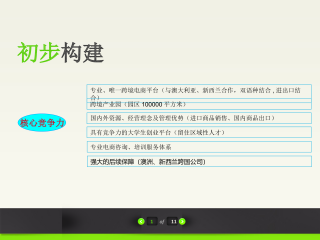
 2025-01-09 27
2025-01-09 27 -
跨境电商方案范文VIP免费
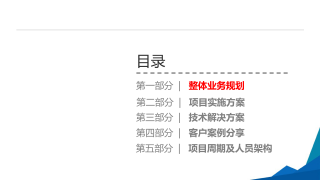
 2025-01-09 14
2025-01-09 14 -
创业计划书VIP免费
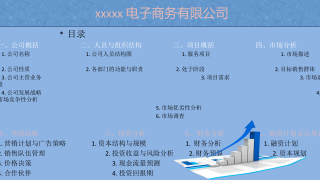
 2025-01-09 18
2025-01-09 18 -
xx生鲜APP计划书VIP免费

 2025-01-09 12
2025-01-09 12 -
跨境电商创业园商业计划书(盈利模式)VIP免费
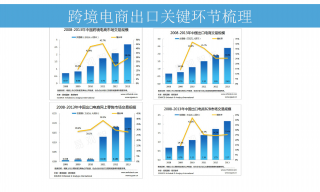
 2025-01-09 8
2025-01-09 8 -
跨境电商计划书VIP免费
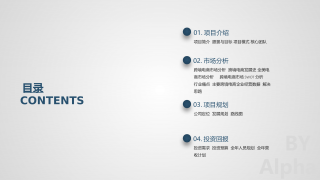
 2025-01-09 13
2025-01-09 13 -
绿色食品电商平台项目计划书VIP免费

 2025-01-09 22
2025-01-09 22 -
农产品电子商务商业计划书VIP免费

 2025-01-09 9
2025-01-09 9 -
农村电商平台商业计划书VIP免费
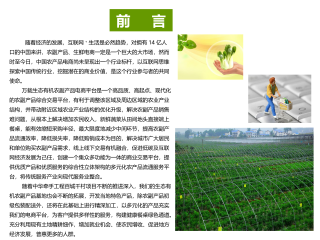
 2025-01-09 13
2025-01-09 13 -
生鲜商城平台商业计划书VIP免费
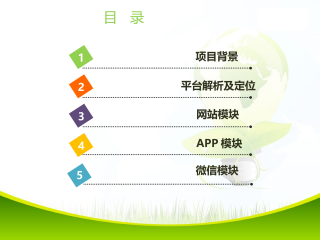
 2025-01-09 21
2025-01-09 21
作者:牛悦
分类:高等教育资料
价格:15积分
属性:91 页
大小:7.12MB
格式:DOC
时间:2024-11-11


